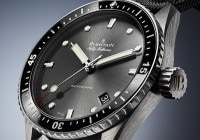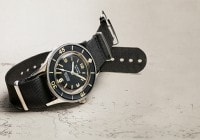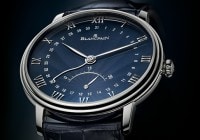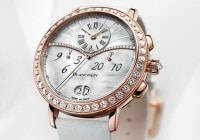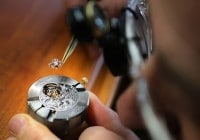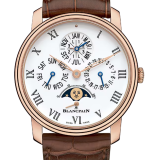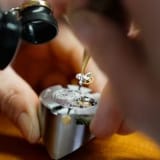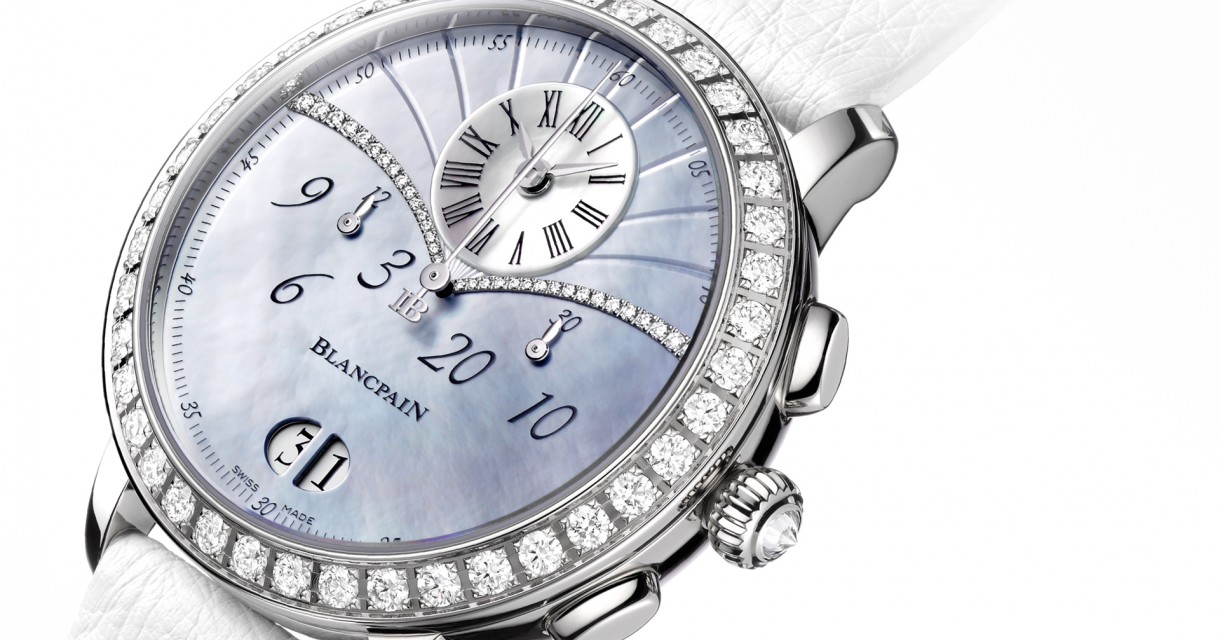
Search in Issues
Chapters
Chapter 6
Villeret Seconde RÉTROGRADE DATE
What may be seen as a simple complication is, in reality, not so simple at all.
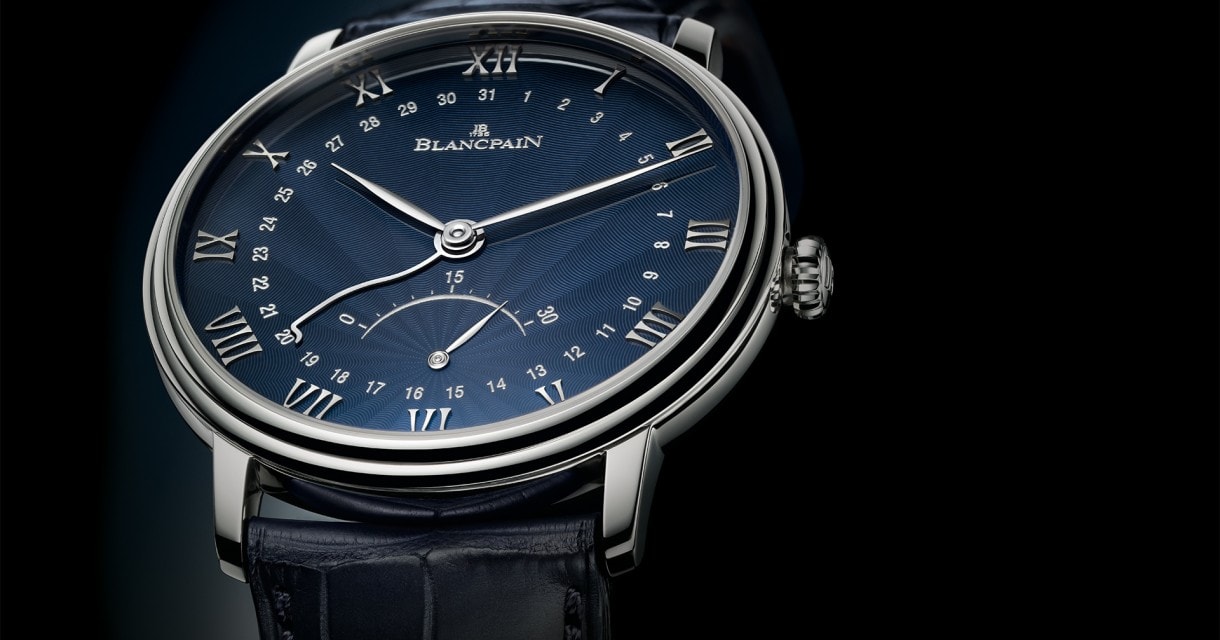
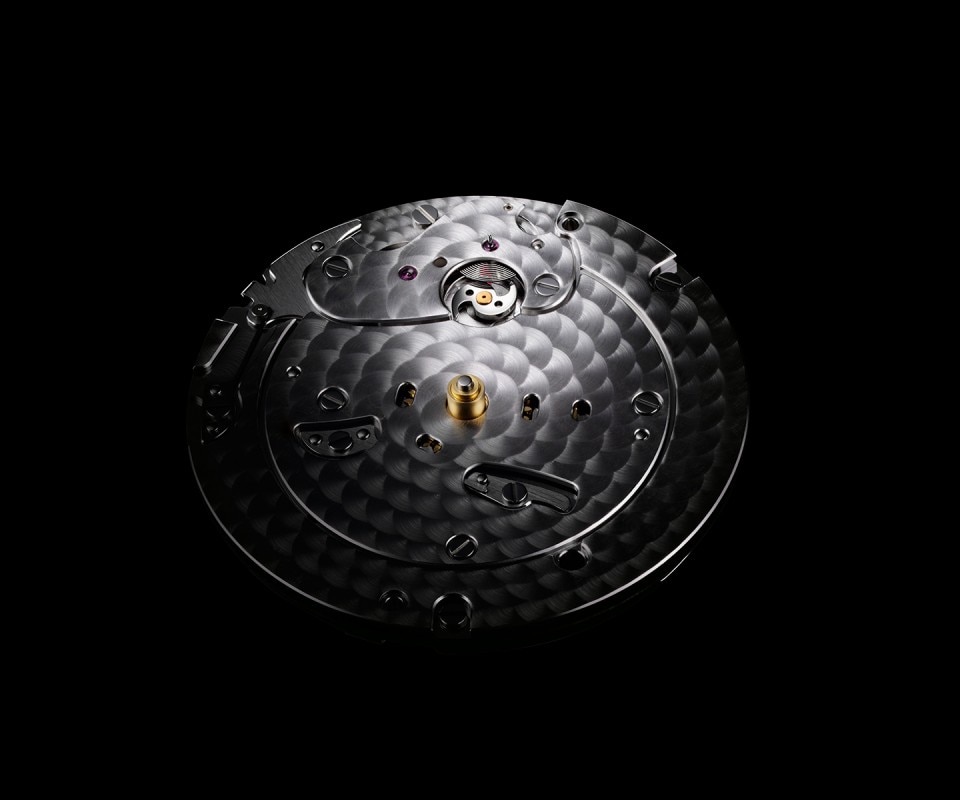
The dial side view of the movement showing the snail cam and spiral that are central to the retrograde seconds mechanism.
IN THE CREATION of the retrograde seconds complication, Blancpain settled on a refined design.
One of the joys of watch collecting is finding timepieces that offer visual “action” on the dial. The savants will be quick to pounce, no doubt pointing out that every watch offers action on the dial, provided it’s running, of course. But fixating a gaze on, say for example, the minute hand, drinking in the action as it marches around the dial, probably is too sedate for all but the most easy to please. And if the stare is upon the hour hand’s movement, no doubt a conservatorship will be imposed at once, and the watch, together with the rest of one’s worldly goods, placed under a trustee’s control. For sheer entertainment value, Blancpain’s Carrousel and its tourbillons secure their places at the top of the pyramid. Lots going on, whirlwinds of motion. Both grand complications.
What of a smaller complication, but pleasing nonetheless? Enter the Villeret Seconde Rétrograde Date that brings intriguing motion to the dial with a seconds hand that retrogrades twice a minute. For watchmakers, the term “rétrograde” means an indication that advances along an arc, and then instantly revers- es course and recommences at the starting point. Although the rate of movement is that of a classic seconds hand, the visual attraction is vastly increased as every 30 seconds the hand snaps back to the zero position and restarts.
Blancpain was not the first to create a retrograde seconds complication for a wrist watch. Several other great houses have introduced retrograde seconds watches over the years. There are, however, significant challenges to this complication. The previous iterations of retrograde movements have utilized designs where a gear is added to the small seconds pinion.
This gear, in turn, drives a ratchet gear that moves the seconds hand. At the end of its sweep, the ratchet gear must disengage from the constantly-turning center gear, rapidly move back to the zero position and re-engage again. In this there are two very serious techni- cal problems. First is the re-engagement of the ratchet gear following the return to zero. When gears are separated at the end of the second hand sweep and re-engaged at zero the relative position of the teeth is completely random. In a perfect world, the teeth of the ratchet would fall into the troughs of the center gear, and life would be good—resulting in a perfectly smooth restart of the movement of the hand. The trouble is the world is not perfect. It is just as likely that at the return to zero the teeth of the ratchet gear would drop directly onto the teeth of the center gear and, following a bounce or two, finally settle into an adjacent trough where they belong. The result: a bounce or jump in the start of the movement of the seconds hand. Of course, the teeth may fall into positions between these extremes, producing some degree of jump on a random basis.
A MULTITUDE OF ISSUES were confronted to produce a robust and smoothly operating mechanism.
There is a second problem with these predecessor retrograde seconds designs. All of this somewhat harsh engagement and dis-engagement of gears is occurring on the shaft directly attached to the watch’s escapement. This is the most sensitive part of the gear train. Indeed, it is the center of the watch’s time keeping. Regulation and maintenance of a healthy amplitude of the watch’s beat become more difficult with this kind of engaging/dis-engaging system directly attached to the escapement. In short, these predecessor retrograde seconds designs are somewhat tricky to build, sensitive to adjust and, in any event, a bit harsh in their operation.
Blancpain’s movement designers have perfected an entirely different and new conception for the retrograde seconds complication, which avoids altogether direct drive of a ratchet by a gear and shaft attached to the escapement. In place of a gear, Blancpain’s design utilizes a cam (for those of you eager to build your French watchmaking vocabulary, a “colimaçon”). Although a ratchet gear is used, it remains engaged constantly with the gear driving the seconds hand itself. The cam and ratchet gear are held against each other by a spring, ensuring smooth movement and best of all, no random meshing of teeth following the retrograde’s return to zero.
There are a multitude of issues which Blancpain confronted to bring this design to fruition. First. the ratchet gear is held against the cam by a spiral shaped spring. This spring insures that the contact with the cam is smooth and, of course, when the cam has turned to present the trough to the ratchet, that the ratchet will retrograde instantly to zero. Too strong a spring and the energy consumed by the system will be too great and the drain on the running of the watch too costly in terms of amplitude of the balance and power reserve. Too weak and the seconds hand would be susceptible of bounce and the return to zero uneven.
Second, the ratchet itself needs a counter weight in order to even its balance and to diminish the effects of accelerations arising from shocks. This ensures smooth operation. The counter weight appears as a lobe on the end of the ratchet arm furthest from its teeth. The lobe prevents bouncing of the hand if the watch receives a shock.
FIGURE 1
shows the layout of Blancpain’s system. The centerpiece of the module is the snail cam “A.” This is attached to the seconds pinion and turns once each minute. Riding along the edge of the snail cam is the ratchet “B.” As the cam “A” turns, the ratchet is displaced, and via engagement between its teeth and a pinion attached to the seconds hand, “C,” the seconds hand moves along its course on the dial. Tension for the system is supplied by the spiral spring, “D.”
FIGURE 2
Every thirty seconds, the rotation of the cam “A” progresses to the stage where the edge of the ratchet “B” reaches the edge of the snail, at which point the ratchet edge “falls” into one of the two deep troughs of the cam. This sudden “fall” smartly snaps the seconds hand back to zero with energy supplied by the spiral “D” and the next 30 second progression begins.

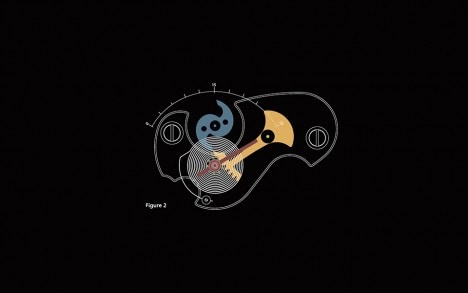

Finally, there was the question of movement selection. One of Blancpain’s work horse movements is the two-barrel, four-day power reserve 1150. The 1150 beats at 21,600 beats per hour and, when first introduced by Blancpain, was utterly revolutionary, as it offered the longest power reserve of any automatic movement in the industry. By itself, it started the trend of high power reserves that others have now copied. For the retrograde seconds complication, Blancpain selected a variant of the 1150, dubbed the 1160.4. Like the 1150, it has two main spring barrels, however its beat rate is higher 28,800 per hour, versus 21,600 for the 1150. The base 1160.4’s power reserve is, however, somewhat lower at 72 hours. The reason that the power reserve is lower in this variant is rather simple. Because it beats faster, the energy of the barrel is depleted faster. Simple math. The reason that the higher beat rate 1160.4 was selected by Blancpain is that it would produce smoother operation of the retrograde seconds hand. With the added burden of the extra spring for the retrograde seconds, Blancpain has conservatively rated the power reserve of what is denominated as the caliber 7663.4 as 65 hours.
There was an interesting chapter in Blancpain’s development of the retrograde seconds movement, reliability testing. Alain Delizée, profiled in Issue 7 of Lettres du Brassus, took charge of this phase of the work. And what he fashioned for testing was remarkable. In order to simulate a lifetime of retrograding, he took a movement, removed the balance wheel so that it would run at a ferocious rate, and, as they say, “let ‘er rip.” Even with punishment like this, Blancpain’s system proved its robustness, running perfectly.
Retrograde seconds is classed as a “petite complication” and certainly when compared to, for example, a minute repeater or Carrousel, one might call it “petite”. But looking back at this development process and the subtle issues that were confronted, there is nothing “petite” about the complication.
In the Villeret Collection the retrograde complication is offered in two general varieties: one without date and the other with a serpentine date hand. Both models, with and without date, are fitted into 40 mm white gold or red gold cases. All of white gold models feature guilloche dials, silvered for the non-date variant and blue for the date model. The non-date red gold model offers a black guilloche dial while the date model’s dial is opaline.

